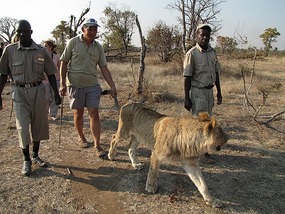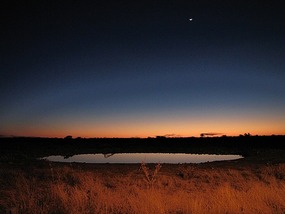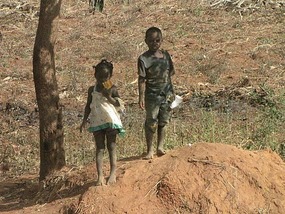Two months travelling 9,000+ km from Kenya, Tanzania, Malawi, Zambia, Botswana, Namibia and finally to South Africa.
Forty three days with Acacia Africa on an overland truck safari with at times up to 23 others camping under the Southern Hemisphere stars capped off at the end with a week driving with brother Tim over 2,500 km from Capetown to Jeffries Bay along the Garden Route and back through the inland N62 route passing by the many vineyards.
The Acacia Africa trip was effectively seen in two halves.
Firstly Kenya to Zambia (Nairobi to Livingstone) where we encountered the animals up north in Kenya and Tanzania to passing by the many villages.
Secondly the leg from Botswana through sandy Namibia and finally to South Africa was mainly about the stunning barren desert like scenery.
The lions (yes, I like my lions) in Serengeti to the wonderful water hole, especially the night shots of the animals coming to drink at Etosha National Park in Namibia.
Time to reflect on a wonderful time out.
The primary three objectives of my trip were to see:
1) the animals in their natural environment
2) the African scenery
3) finally a glimpse as to how the locals are adjusting to the rapidly advancing modern world.
I wasn't disappointed on all counts. It became very quickly apparent that I wasn't the tourist seeing the animals and local villagers. We as the travellers were on show to the resident animals as well as the hundreds of villagers, especially the smiling waving children, as we past them.
The scenery was vast and expansive, especially the Serengeti (endless plains), Kalahari desert and Namibia.
I can’t read or write in a moving vehicle so most of the 43 days when we were travelling the 9,000+ km, I had plenty of time to look out the truck’s rattly windows and see the ever changing landscape and ponder.
I have many, many memories ranging from:
Scenery / Nature / Animals
Experiencing the mighty natural water forces of Mosi-o-Tunya, Victoria Falls, "Smoke that Thunders" from seeing it high above in the microlight, walking through the upward blowing waterfall spray to the white water rafting ride down the Zambezi River to sailing under the gentle breeze off the Spice island of Zanzibar.
Being out in the open both seeing the milky way with virtually no light pollution or spillage from cities / towns, colourful orange sunrises and even more red sunsets with the evening’s shooting stars.
The vast distances of simply sheer flat openness.
Contrast of bird life – mainly species that I have never seen.
I have been blessed to have been able to witness wild animals living in their natural environment. Visiting a zoo or private game reserve will never be the same. We as tourist were on show.
Yes, I would love to return and see the annual migration of 250,000 + wildebeests moving between the Serengeti Plains and Masai Mari from a hot air balloon.
The challenge of taking animal night shots at Etosha National Park water hole.
Effect of global warning on the animals.
For example, last season record high monsoon rains meant that the 16,000 sq km Okavango Delta rose 1.5 metres displacing thousands of animals.
This year, Africa is experiencing a much colder winter than normal.
People / Living
The contrast of mainly poor rural Malawi to South Africa with its own challenges.
Small windowless mud houses with thatched or rusty corrugated roofs, no sanitation or power to mansions surrounded by high fences atop with razor wire.
Seeing houses out in the countryside with no electricity yet they had TV aerials or satellite dishes.
The long 600 km daily drives along roads that ranged from highways with a 120 km speed limit to national roads that are taking years for resurfacing with essential supplies and money being diverted (political), hence potholes. This is also compounded with lengthy hold ups at borders of these roading supplies.
Cell phone towers within the vast national parks.
Villagers with cell phones and no fixed landlines.
Wood and water collected by women carrying their loads on their heads walking distances back to the villages.
Children (and adults) waving as we past.
Tall upright proud Masai warriors dressed in their red and purple walking (or cycling) across the endless openness.
Village Muslim mosques alongside various Christian churches.
School children in their uniforms – some dressed in white veils. While children were given basic education, many sort higher education funding.
Children playing soccer on dusty fields with tree branches for goal posts.
Modern cities supermarkets and department stores with products like wide screen plasma / LCD televisions that I am used to yet less than an hour away are villages with mud brick glassless window houses with no power nor water let alone sanitation.
The imbalance of income - those who were living comfortably to just across the road the unemployed in shanty towns (townships).
Next generation growing up with our western influence … will they lose their centuries old handed down customs and culture?
Effect of alcohol, HIV / AIDS.
Roadside stalls selling local charcoal, wood, fruit, potato, with limited passing traffic for the locals to try and earn a small bit of money. They were subsistence living.
Passing and simply being waved through the countless local police road blocks in either villages or the middle of nowhere.
Judder bars in the weirdest of places.
Mainly truck and bus transport ie lack of private cars.
Variety of different border crossing experiences from walking through a shoe dip for foot and mouth disease prevention to even getting my index finger scanned from both hands by the police before being allowed to enter South Africa.
Used plastic water bottles littering the road side and campsites.
Water conservation notices.
Solar water heating in some new houses.
Seeing reminders of the slave trade from Stone town in Zanzibar to Capetown in South Africa and the involvement of David Livingstone with the abolition of slavery.
Passing through the vast areas that David Livingstone explored but I had the benefit of roads.
Visiting Robben Island in Capetown and also seeing where Nelson Mandela was finally freed from after being imprisoned for 27 years. He spent 18 years on Robben Island. Hearing first hand from a former Robben Is inmate a little bit of the struggle and apartheid not that long ago.
Driving past in South Africa the many what I call shanty towns (townships) and associated unemployment. They looked like vast fields of shipping containers. Many shanty towns had no power.
Driving past the many South African vineyards, I can now see why we in New Zealand can not compete with their wine industry. South African’s cheap labour plus vast areas planted out in vines. Stellenbosch is more than just wine, it also has the distinctive white Cape Dutch style buildings.
In Swakapomund, Namibia to see within 2 km thousands unemployed living in shanty townships to nearby sea side suburbs with locked up by absentee owners and their seaside resort houses like those at our (New Zealand) Coromandel Peninsular’s Pauanui.
At no times did I feel unsafe from either being only a few metres from wild animals or walking the streets of Nairobi, Kenya or South Africa cities and towns.
Yes, I saw the big 5: Elephant, leopard, lion, rhinoceros and buffalo.
Seeing this southern part of the African continent on either TV or in books / magazines will never be the same again.
My 7,000+ photos, short video clips plus journal notes are my reminders of this huge contrasting continent that certainly has many diverse challenges in front of it, the scenery, animals, people and my fellow travellers.
Want to see more of many wonderful African images? Look at either my Travelpod site or my Flickr or Travelpod sites for sets / entries of my African trip. These are my web base back up storage sites: http://www.flickr.com/. Under "Find travellers" I am "bruceontour" to get to my pictures and in Travelpod site http://www.travelpod.com/ my "bruceontour" blog has supporting pictures and videos.
Yes, this 50 something Kiwi made it around Africa without too many issues. I am sure it is merely a state of mind how ones approaches such an overland trip: pitching a tent most nights, camping and travelling with most who are much younger than oneself. Would I do it again in this travel manner? Yes. Still much more of Africa to see one year in the future.
Finally, sincere thanks to those who made this wonderful trip for me possible.
Africa, a continent of many Contrasts & Challenges
Sunday, August 30, 2009
 Auckland, New Zealand
Auckland, New Zealand
Other Entries
-
21Walk on the wild side
Jul 1546 days prior Livingstone, Zambiaphoto_camera26videocam 0comment 0
Livingstone, Zambiaphoto_camera26videocam 0comment 0 -
22Border crossing ... foot and mouth dip ...
Jul 1645 days prior Kansane, Zambiaphoto_camera6videocam 0comment 0
Kansane, Zambiaphoto_camera6videocam 0comment 0 -
23I wanted my HIPPO mouth WIDE open photo
Jul 1744 days prior Kasane Botswana, Botswanaphoto_camera36videocam 0comment 0
Kasane Botswana, Botswanaphoto_camera36videocam 0comment 0 -
24Frogs and stars over the Okavango Delta
Jul 2041 days prior Maun, Botswanaphoto_camera46videocam 0comment 0
Maun, Botswanaphoto_camera46videocam 0comment 0 -
25San Kalahari Desert bush people
Jul 2140 days prior Ghanzi, Kalahari Desert, Botswanaphoto_camera20videocam 0comment 0
Ghanzi, Kalahari Desert, Botswanaphoto_camera20videocam 0comment 0 -
26Sunrise over the Kalahari Desert
Jul 2239 days prior Windhoek, Namibiaphoto_camera6videocam 0comment 0
Windhoek, Namibiaphoto_camera6videocam 0comment 0 -
27Exhilarating, Extraordinary Etosha Experience
Jul 2536 days prior Okaukuejo, Namibiaphoto_camera36videocam 0comment 0
Okaukuejo, Namibiaphoto_camera36videocam 0comment 0 -
28Spitzkoppe - Matterhorn of Namibia
Jul 2635 days prior Spitzkoppe, Namibiaphoto_camera24videocam 0comment 0
Spitzkoppe, Namibiaphoto_camera24videocam 0comment 0 -
29Swakopmund: A city that has 4 faces
Jul 2734 days prior Swakopmund, Namibiaphoto_camera40videocam 0comment 0
Swakopmund, Namibiaphoto_camera40videocam 0comment 0 -
30Dune 45 and Dead Vlei, Sossusvlei
Jul 2833 days prior Sesriem, Namibiaphoto_camera52videocam 0comment 0
Sesriem, Namibiaphoto_camera52videocam 0comment 0 -
31The not so winding 10 km road to Fish Canyon
Jul 3031 days prior Fish River Canyon, Namibiaphoto_camera16videocam 0comment 0
Fish River Canyon, Namibiaphoto_camera16videocam 0comment 0 -
32Bye Namibia ... Hello South Africa
Jul 3130 days prior Kotzeshoop, South Africaphoto_camera18videocam 0comment 0
Kotzeshoop, South Africaphoto_camera18videocam 0comment 0 -
33Acacia journey's end: Capetown
Aug 0228 days prior Cape Town, South Africaphoto_camera42videocam 0comment 0
Cape Town, South Africaphoto_camera42videocam 0comment 0 -
34Journey's Over ... not quite
Aug 0327 days prior Cape Town, South Africaphoto_camera26videocam 0comment 0
Cape Town, South Africaphoto_camera26videocam 0comment 0 -
35So sad to see these wild animals penned up
Aug 0426 days prior Albertina, South Africaphoto_camera34videocam 0comment 0
Albertina, South Africaphoto_camera34videocam 0comment 0 -
36World's highest bungy to Jeffreys Bay
Aug 0624 days prior Jeffreys Bay, South Africaphoto_camera12videocam 0comment 0
Jeffreys Bay, South Africaphoto_camera12videocam 0comment 0 -
37Garden Route N2, Route 62 & Swartberg Pass
Aug 0723 days prior Montagu, South Africaphoto_camera14videocam 0comment 0
Montagu, South Africaphoto_camera14videocam 0comment 0 -
38Wineyards ... Nelson Mandela's last prison
Aug 0921 days prior Cape Town, South Africaphoto_camera42videocam 0comment 0
Cape Town, South Africaphoto_camera42videocam 0comment 0 -
39Locked up in maximum security prison!
Aug 1020 days prior Cape Town, South Africaphoto_camera38videocam 0comment 0
Cape Town, South Africaphoto_camera38videocam 0comment 0 -
40Africa, a continent of many Contrasts & Challenges
Aug 30 Auckland, New Zealandphoto_camera4videocam 0comment 0
Auckland, New Zealandphoto_camera4videocam 0comment 0

 Auckland, New Zealand
Auckland, New Zealand








2025-05-23